Cooking … is made on the table: between innovation and experimentation, induction hobs are integrated in the surfaces, in a new idea of a convivial and multifunctional space. For a new kitchen experience
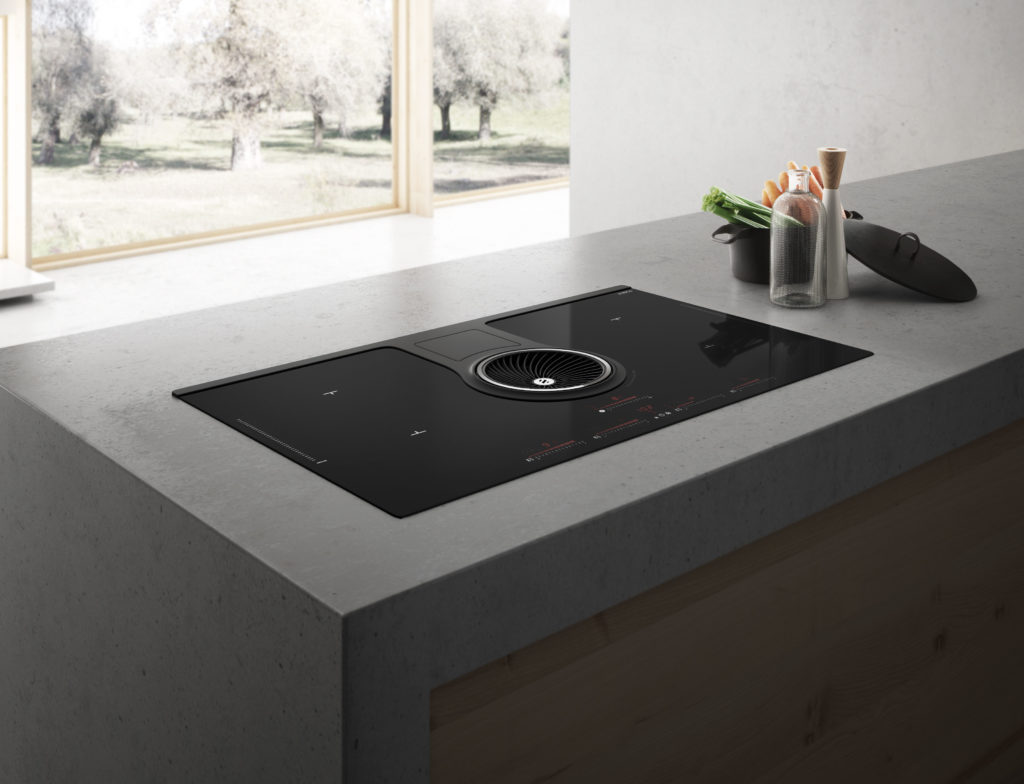
by Anna Casotti
Kitchen, as a convivial space, relives in all its new expressions through future concepts that integrate the space strictly dedicated to cook with the symbol place of the collectivity, dialogue and relax: the table. An aesthetic universe which in recent years has reached its full functionality through the use of induction cooking, which turns into a world of more and more accurate and unexpected experimentations. A search that gathered several kitchen design brands with the most renowned companies operating with materials such as ceramics and porcelain stoneware including Cosentino, Marmo Arredo with the new OffMat, SapienStone by Iris Ceramica Group, TPB Top Porzelanik Barcelona®, Hubstone, Lago…
The revolution? Induction hobs that disappear within the surface area, immersed in a design that creates innovative scenarios in the art of living. «The real innovation is the ability to make visually disappear the hob from the worktop of a kitchen» – tells Elio Latini, CEO of the Hubstone project, in collaboration with Fabita, a leading manufacturer of induction hobs. A system able to embed the induction cooking within the worktop, opening to new and unimaginable creative and functional scenarios. For a kitchen without visual delimitations. «The application of the Hubstone system has been studied and conceived to be applied to kitchen hobs without any limit in terms of types of color variations, etc … and indeed thanks to its specific characteristics it is particularly suitable, in any declination, to replace the vitroceramic.» A project that has obtained a great success and is developing a series of new and cutting edge innovations for 2018 we cannot reveal yet…
In this new avant-garde appliances reinvent themselves transforming in “invisible” and hyper-functional objects, in an interaction with the different areas of the kitchen. One example is the NikolaTesla induction hob by Elica, designed by Fabrizio Crisà, that for the first time integrates a suction system, positioned in the central area of the hob able to “communicate” with the cooking zone. And in its High Performance version other functions are incorporated to allow the consumer to customize his own idea of future living.
The kitchen of the future
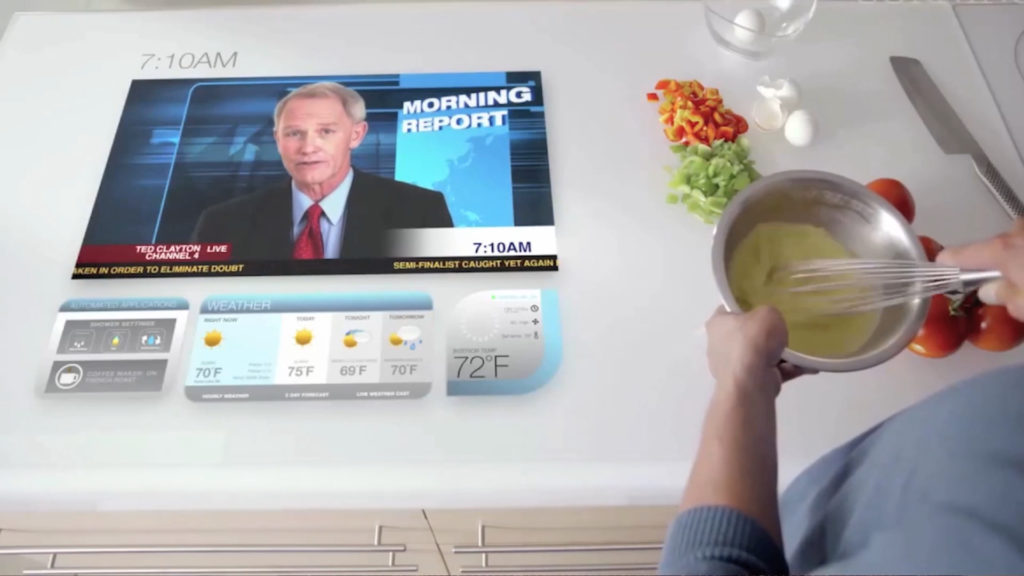
About the future kitchen Silestone Institute – study and research platform at international level promoted by Gruppo Cosentino – has recently presented “Global Kitchen: the home kitchen in the globalization era”, to provide an overview on new trends. A study that saw the participation of 17 experts in the fields of sociology, nutrition, technology and sustainability including the chefs Andoni Luis Aduriz (Mugaritz restaurant ** Michelin), the Harvard anthropologist Richard Wrangham, the architect Piero Lissoni and Alessandro Finetto, director of the Global Consumer Design of Whirlpool EMEA&Asia. With interviews in 8 countries – Italy, Australia, Brazil, Portugal, Spain, Sweden, United Kingdom and United States – to more than 800 professionals the research has revealed how, in the next few years, kitchen will be more and more integrated in the different spaces of domestic life, becoming a multifunctional and hyper-connected space, allowing us to cook, telephone or watch TV simply touching the work surface. A place where relax, recreation, work, well-being are combined, equipped with the most sophisticated household appliances now existing only in the professional kitchens. And among the most requested features and functions, the ability to cook on any surface without the need of intermediate supports. Because in the kitchen of the future worktops will also have to incorporate connectivity, acting as a control panel for the other devices in the house and provide additional functionalities such as the ability to weigh and calculate the exact nutritional value of food, absorb liquids and activate self-cleaning processes … «Kitchen must be flexible and customizable – says Alessandro Finetto, Director of the Global Consumer Design of Whirlpool EMEA&Asia. – For this, it will be necessary to develop new home appliances that integrate intelligent information, those we call smart solutions, able to understand what day of the week is and what the time of day.
Household appliances that ask the user if he want to bake a croissant or something else ….»
Contemporary tradition
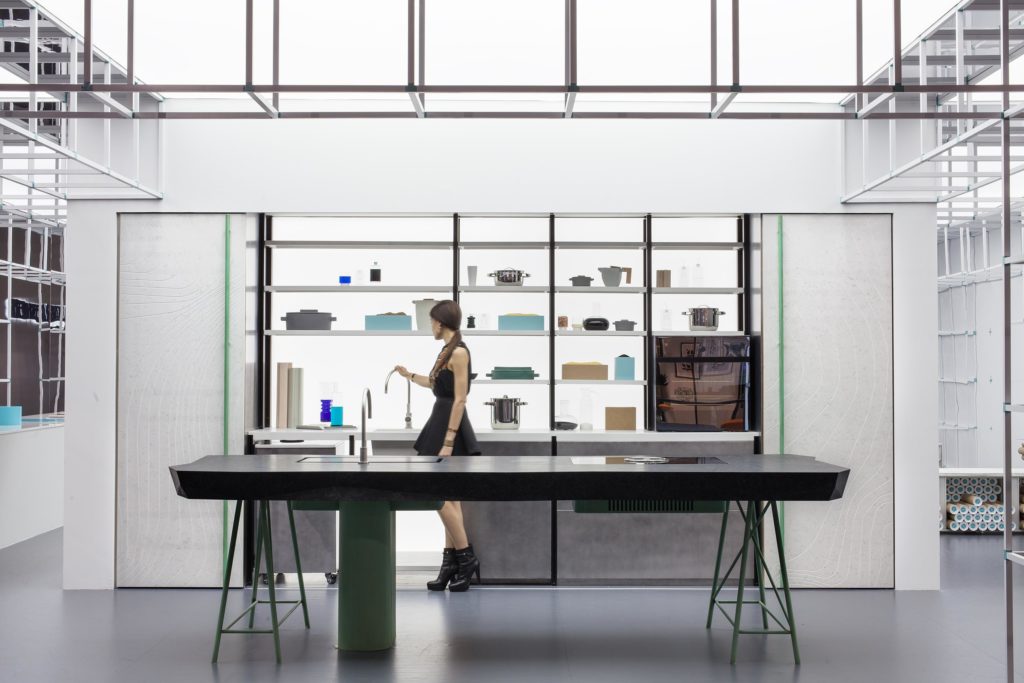
But future is already here with a project presented by the new OffMat business unit, research laboratory created by Marmo Arredo, where industrial excellence, research and contemporary design are combined to develop innovative products and experimentation in the field of new technologies and materials . Thus the first responsive kitchen was born in the world, Tulèr: a real table – a sheet with a thickness of 12 cm suspended on two stands – that integrates all the functions within the hob thanks to a series of solutions developed ad hoc. In the name of a close link with the Italian culture: in the dialect of the town of Imola (Bologna-Emilia Romagna region), Tulèr were the tables with marble top on which people handmade pasta at home. They were equipped with rolling pin, cutting boards and retractable shelves. And this is exactly Tulèr, transliterated in current times. Each element is invisible: from the sink to the scale, from the cooking areas to the wireless charging. Made with OffMat Quartzforms (Sone engineered) or natural stones, the worktop is able to weigh, cooking, washing thanks to the presence of weight sensors; manage controls and touch surfaces, guiding the user in all the different functionalities in an intuitive way. With one gesture, but without contact, it is possible to transform an area of the top in the sink, turn on and adjust the water jet; another zone, instead, is sensitive to the weight, transforming itself in a scale with a bright line and communicating data to other devices through bluetooth; cooking, thanks to the development of the induction system that uses the surface material, takes place in the areas outlined with a circular hollow. Lastly, for charging the smartphone it is enough to put the device on the top thanks to an integrated wireless charger. Innovations that also express themselves in the morphology of Tulèr, inspired by the cooks’ movements in the kitchen: made with a polygonal edge with surfaces that meet themselves, it creates a succession of concave and convex areas, in a new and surprising conceptual dynamism.
The cook … at table
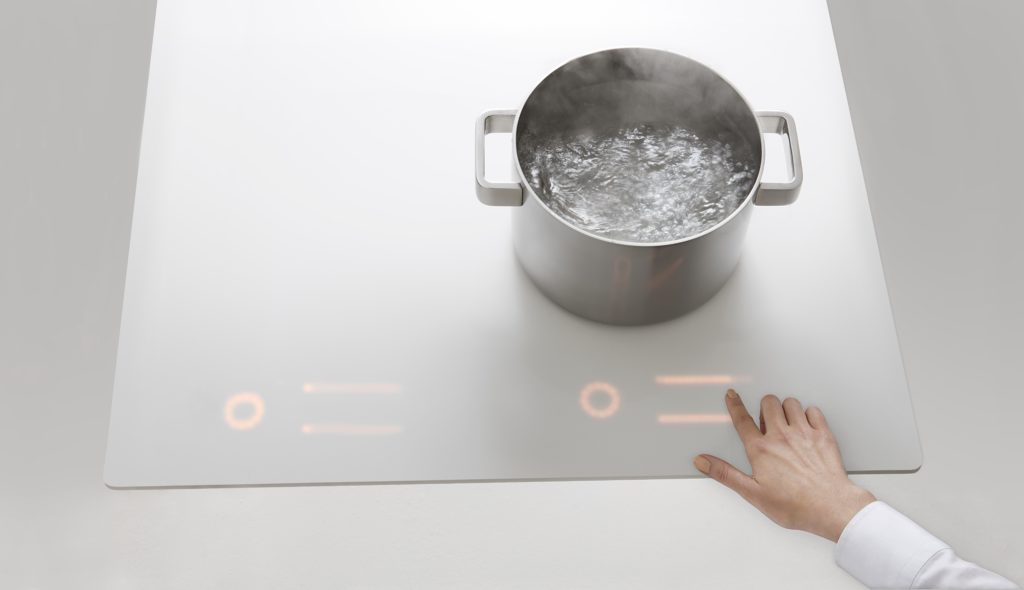
Conceived by Clemens Weisshaar and Reed Kram for Iris Ceramica Group, SmartSLab Table reinvents the traditional table creating a place for eating, cooking, keeping food warm and drinks cool thanks to the innovative SapienStone composite material. A material able to integrate a heating and cooling technology in its interior, in addition to sensors directly placed on large ceramic sheets. The numerous options also include: induction cooking modules, wireless charging base and control systems such as switches, creating a wide range of potential applications in both design and architecture. The top layer of the SmartSLab composite is in fact made with SapienStone, a practically indestructible ceramic material, resistant to fire, frost, thermal shock, scratches and bacteria, versatile and adaptable for any use: from the furniture to the interior layout up to the architectural structures in a creative vanguard destined to transform the idea of contemporary living.
New Revolution System
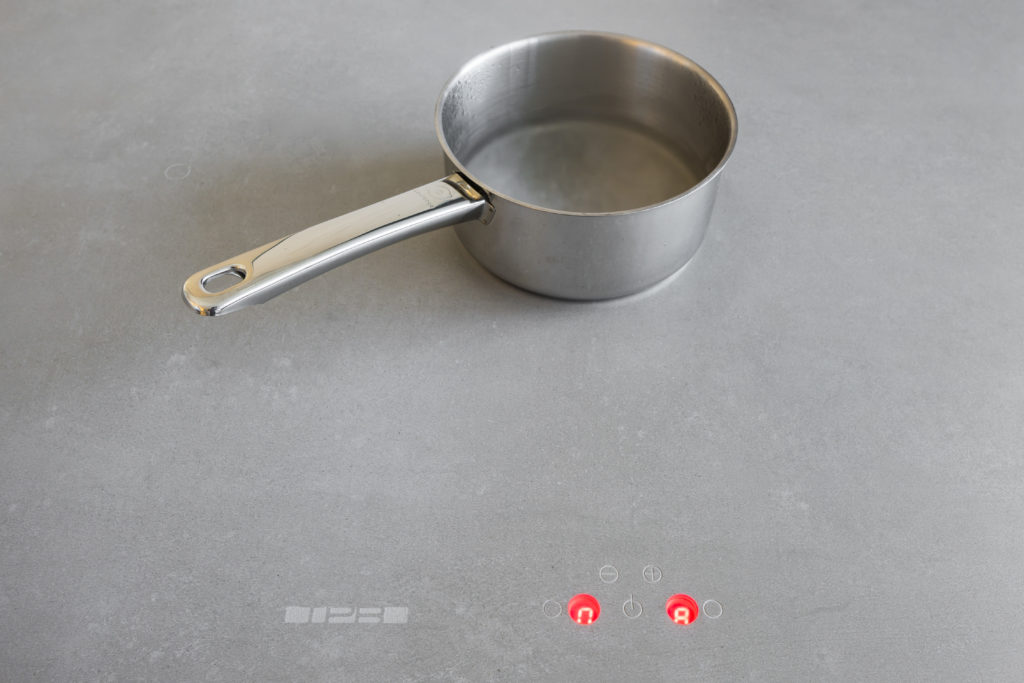
A true revolution of cooking concept is presented by the Spanish TPB Top Porzelanik Barcelona® with the TPB tech® system that incorporates an induction hob in the worktop. The electromagnetic energy generated by the induction passes through the worktop that instantly heats the pots to cook quickly (the top does not heat so avoiding burns and scalds) and with a considerable energy saving. Available in a variety of finishes to customizethe user’s own idea of kitchen, through a linear and elegant design. This is how several projects were born in partnership with companies like Diskalsa that presented the new SilkeTech, cooking-table with ceramic top similar to marble, elegant laser markers indicating the exact support point for the pots and on-off buttons cleverly camouflaged on the surface or SapienStone, the new brand of Iris Ceramica Group dedicated to high-end tops that combine intelligence and beauty.
Circle island
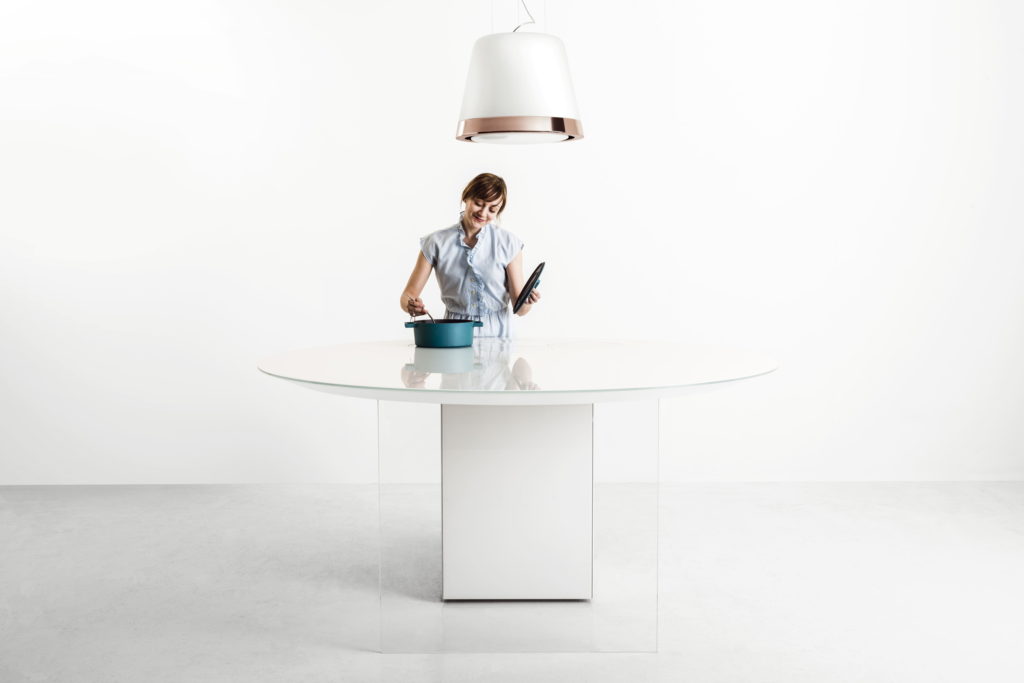
Ode to conviviality, the kitchen/table Air by Lago – Daniele Lago design – is a circular island, adaptable also to the smaller homes, that put “the fire at the center of domestic life” again, where chefs and diners participate in the rite of food preparation, between beauty and empathy. Made of glass, with integrated induction hob, it appears as a suspended totem, available in different finishes. «The Air kitchen – Daniele Lago explains – was born with the intent of developing, as we always do in our design, new meanings. Recently we realized the importance of empathy as a development driver, in general terms for the society we live in, and in our small environment with regard to design. The empathic design of the Air island kitchen allows a direct dialogue between who cooks and who participates in the magical ritual of food preparation, both through the visual relationship, and of closeness to the cook himself.» Two are the partners of Air kitchen: Elica and Sambinet.



